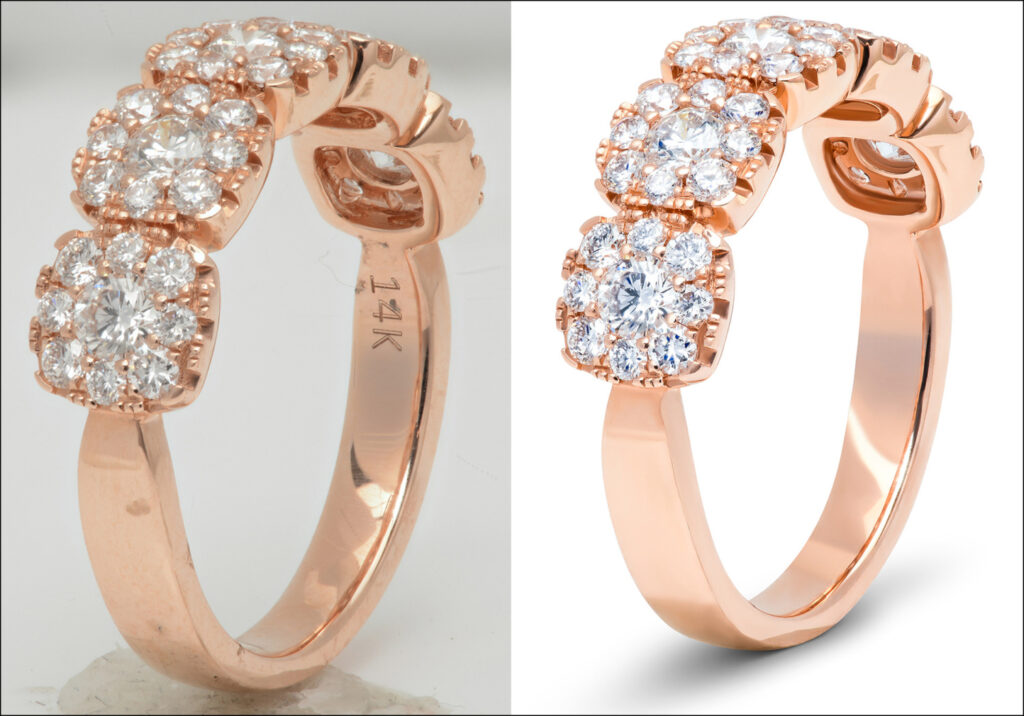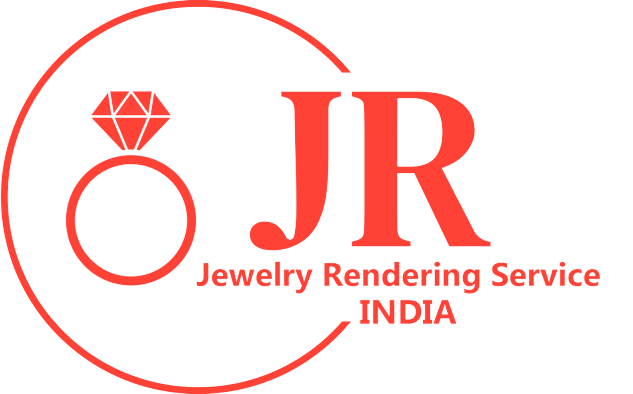Photo Retouching Services
jewelryrenderingserviceindia.com
Photo Retouching Service
Jewelry photo retouching services refer to the process of enhancing and improving the quality of photographs of jewelry items using digital editing techniques. These services are commonly used in the jewelry industry to make jewelry images appear more appealing, professional, and market-ready.
Jewelry photo retouching services play a critical role in presenting jewelry products in their best possible light, whether for online sales, marketing materials, or catalogs. By enhancing the visual appeal of jewelry images, these services can significantly impact a customer’s perception of the product and influence purchasing decisions.

Breakdown of what jewelry photo retouching involves
Background Removal: The background of jewelry images is often removed or replaced to isolate the jewelry piece and make it stand out. This can be especially important for e-commerce listings where a clean, consistent background is preferred.
Color Correction: Photo retouchers adjust the colors of the jewelry to make them appear more accurate and vibrant. This includes correcting the color of gemstones, metals, and any other materials used in the piece.
Brightness and Contrast: Proper adjustments in brightness and contrast are made to ensure that the jewelry is well-lit and that details are clearly visible. This can help highlight the intricate designs and textures.
Reflections and Shadows: Retouchers often add or enhance reflections and shadows to give the jewelry a three-dimensional and realistic appearance. This can make the jewelry look more appealing and natural.
Cleaning and Polishing: Any imperfections or blemishes on the jewelry, such as scratches or dust, are retouched to make the piece look flawless and pristine.
Gemstone Enhancement: The brilliance and sparkle of gemstones are enhanced to make them look more attractive and eye-catching. This involves adjusting the brightness and color of the gemstones.
Metal Smoothness: Metal surfaces are often smoothed and polished to remove any rough or uneven areas. This gives the jewelry a high-quality, polished look.
Detail Enhancement: Fine details, such as engravings or intricate designs, are carefully enhanced to ensure they are visible and well-defined in the photograph.
Resizing and Cropping: Images may be resized and cropped to meet specific requirements for websites, catalogs, or marketing materials.
Consistency: For jewelry collections, retouchers ensure that all images have a consistent look and feel in terms of lighting, color, and style.
High-Resolution Output: The final retouched images are often provided in high-resolution formats suitable for various uses, including print and online marketing.
Quality Control: A final quality check is performed to ensure that the retouched images meet the client’s specifications and quality standards.
Photo Retouching Services FAQ's
Q. What is photo retouching, and why is it important?
Ans. Photo retouching is the process of enhancing or modifying images to improve their overall quality, appearance, or visual appeal. It’s essential because it helps correct imperfections, enhance colors, and achieve a polished and professional look for photos used in various contexts.
Q. What types of photo retouching services are commonly offered?
Ans. Photo retouching services encompass a wide range of offerings, including skin retouching for portrait photos, background removal or replacement, color correction, product retouching for e-commerce, and more.
Q. How do I choose the right photo retouching service provider?
Ans. When selecting a photo retouching service provider, consider factors such as their portfolio, turnaround time, pricing structure, and customer reviews. It’s essential to choose a provider with a track record of delivering high-quality results in your desired style.
Q. Is it possible to request specific changes or edits during the retouching process?
Ans. Yes, reputable photo retouching service providers typically allow clients to provide specific instructions and preferences for the retouching process. Clear communication with the provider is key to achieving the desired results.
Q. What is the typical turnaround time for photo retouching services?
Ans. Turnaround times can vary depending on the complexity of the retouching work and the service provider’s workload. It’s advisable to discuss your project’s timeline with the provider and establish clear expectations regarding delivery.
Q. Do photo retaking services maintain the original image’s quality?
Ans. Yes, professional photo retouching services aim to maintain or improve the original image’s quality. They use non-destructive editing techniques to ensure that the final result is visually appealing without sacrificing image resolution.
Q. Are there specific industries that benefit most from photo retouching services?
Ans. Photo retouching services are valuable across various industries, including e-commerce (product photography), fashion, portrait photography, real estate (property images), advertising, and more. Any sector that relies on high-quality visuals can benefit from these services.
Q. What is the cost of photo retouching, and how is pricing determined?
Ans. Pricing for photo retouching services varies based on factors such as the complexity of the edits, the number of images, and the service provider’s pricing structure. Some providers offer per-image pricing, while others offer packages or hourly rates.
Q. Are there copyright or licensing considerations when using retouched photos?
Ans. It’s essential to clarify copyright and licensing issues with the service provider, especially if you plan to use retouched photos for commercial purposes. Ensure that you have the necessary rights to use the edited images as intended.
Q. Can photo retouching services be used to restore old or damaged photographs?
Ans. Yes, photo retouching services can be used to restore and repair old or damaged photographs. They can remove stains, scratches, and other imperfections to restore the image’s original quality.
